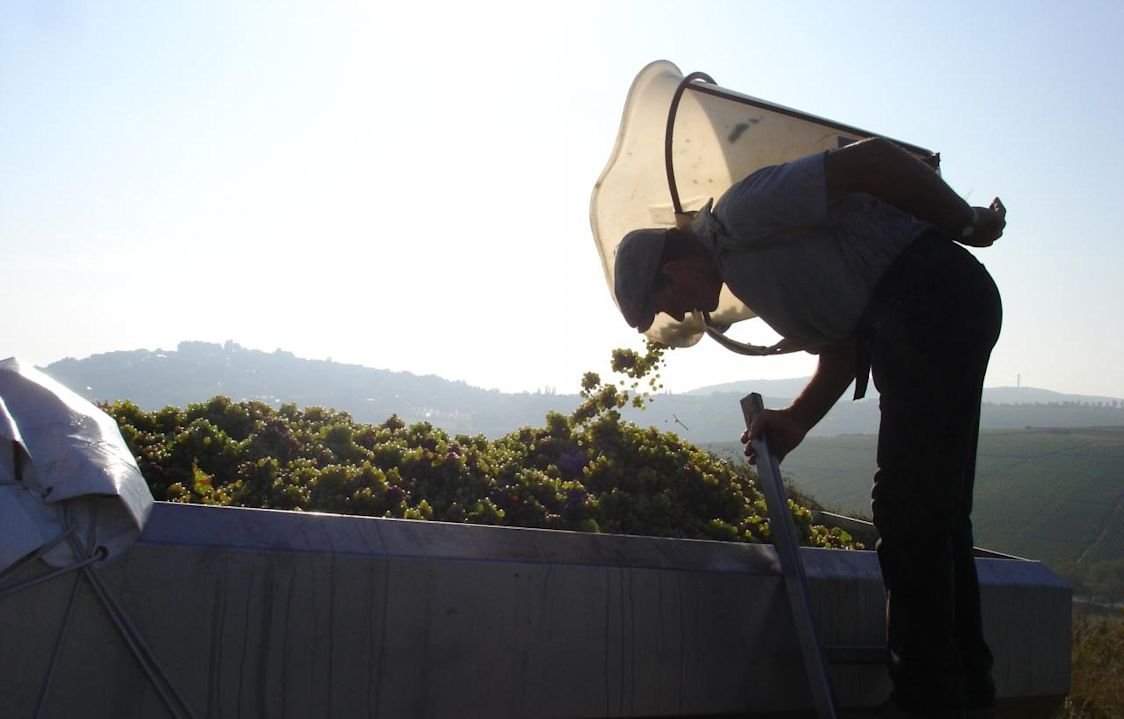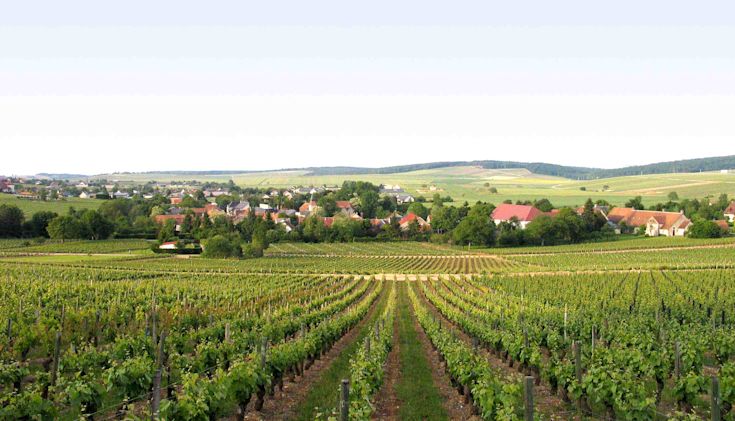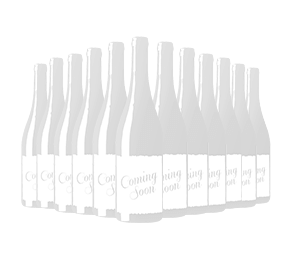Chat with Vinny
The Loire Valley is one of France’s most important wine regions, up there with Bordeaux, Burgundy, and the Rhône. And though best known for Sauvignon Blanc it has much more to explore – from great value stylish fizz zippy seafood whites to elegant light reds and more. Grab a glass of something tasty and find out all you need to know about the Loire in our beginner’s guide.
Where is the Loire Valley?
The Loire Valley wine region stretches from the mouth of the river, by the Atlantic near Nantes, all the way upstream to the famous appellations of Sancerre and Pouilly-Fumé. A scenic stretch of river that’s some 800m long and dotted with fairy-tale châteaux. It’s a beautiful area to visit.
It’s incredibly diverse, with 61 appellations and more than 70,000 hectares under vine. And the Loire produces a wide array of different styles – elegant sparkling wines, ravishing rosés, crunchy reds and, most famously, refreshing whites. It’s a fabulous region to enjoy wine.
Is the Loire a good wine region?
Yes, it’s one of the world’s greatest wine regions, with a terroir (that magical combination of soil, climate, and microclimate) that’s conducive to producing very fresh and potentially complex wines. But it’s also one of the more marginal wine regions in terms of climate, and mother nature can make all the difference to the success of a vintage.
If you’ve ever driven through the region, you might have noticed that the vineyards are dotted with structures that look like mini wind turbines. They don’t generate power but circulate the air, preventing frosts during the crucial budburst season in early spring. Heavy frosts could decimate an entire vintage.
Growers also pray for bright sunny skies during the summer and dry conditions at harvest time in late September. Never a given in a northerly region. And now there’s another climatic hazard to overcome – extremes of heat. The region’s wines are renowned for their freshness, which comes from a good level of acidity in the juice of the grapes.
But a prolonged heatwave in August – which has become more common in recent years – can lower acidity and reduce the freshness of the final wine. So, harvest dates increasingly being brought forward, and grapes are picked in the cool of (very) early morning.
However, when everything comes together perfectly in a great vintage, the quality of the Loire Valley’s great range of wines can be sublime.

What are the Loire’s best-known appellations and wines?
Let’s take a taste tour, starting where the Loire’s estuary flows into the Atlantic. The region called Pays Nantais, not far from the city of Nantes, and the wine for which it is famous is Muscadet. It’s made from the Melon de Bourgogne grape and produces a style with gentle citrus notes, minerality and a unique saline tang.
This French classic fell out of favour with UK drinkers a couple of decades ago, but it’s now back in fashion thanks to a move towards richer, lees-aged wines. Father-and-son-run estate, Domaine Gadais, is a long-time supplier to Laithwaites and specialises in this richer style of Muscadet. The Bougrier family, who have loyal grape growers right across the Loire, also have a big reputation among our customers for great Muscadet, while Jérémie Huchet is behind our creamiest Muscadet of all (100% organic too). These are wines to serve straight from the fridge, alongside your favourite seafood dishes.
Anjou-Saumur
Anjou-Saumur is the next region as we venture upstream. The Anjou appellation is best known for its sweeter style of rosé, while Saumur is renowned for white wines made from the Chenin Blanc grape. Look out for lees-aged wines from the region’s little (but highly revered) appellation of Savennières and anything from Philippe Socheleau, Loire Valley Winemaker of the Year 2022.
Saumur is also home to exceptionally fresh reds with bright, crunchy summer fruit flavours made from Cabernet Franc. In fact, one of the surprises of 2023 was when a mature, very rare example of this style took red wine of show at our London Wine Festival.

Touraine and Vouvray
Now we head further east to Touraine, centred on the ancient town of Tours, and a superb range of wine styles. One of the region’s most celebrated appellations is Vouvray, whose signature style is classic Chenin Blanc (dry, off-dry, and full-on sweet).
Vouvray’s wines typically have lemon, lime and pear flavours and dazzling freshness. The best sweet examples can age for many years and develop a honeyed richness and remarkable complexity. Touraine is also a very happy hunting ground for top-notch Sauvignon Blanc at very down to earth prices. The Vauvy family’s Domaine Bellevue has been delighting customers for decades with smart Sauvignons (which are great-value alternatives to Sancerre).
Sancerre and Pouilly-Fumé
However, if you’re looking for Sauvignon Blanc of the finest quality, head to Sancerre and Pouilly-Fumé, the most famous villages of the Centre-Loire region. A trip to hilltop Sancerre should be on anyone’s itinerary when visiting the Loire Valley.
It’s a pretty medieval settlement perched on top of a hill that rises majestically from the plains below. The views are stunning, and in every direction, you can see precious rows of vines clinging to the limestone slopes. But just wait until you taste the wines, Sauvignon Blancs of remarkable elegance and grace.
Our oldest friends in Sancerre are the Thomas family and their wines are hugely impressive, particularly their special ‘Silex’ cuvée, from vineyards strewn with rocky flints. Gooseberry and citrus flavours and complex mineral notes in perfect harmony. Sancerre is lovely on its own, but classic Sancerre really is a treat served alongside locally made goat’s cheese. Look out too for subtle rosés and exquisite reds, both made in tiny quantities from finest Pinot Noir grapes.
Given the popularity and clamour for Sancerre, it’s easy to understand why its near neighbour across the river, Pouilly-Fumé, can sometimes go under the radar. But the white wines from this even smaller appellation offer up an equally classic and memorable expression of Sauvignon Blanc.
Pouilly-Fumé is a slightly softer, broader style that delivers subtle green fruit flavours and minerally, ‘gunflint’ notes. Snap up any wine from Domaine Bellevue, a tiny little estate whose wines reflect the energy and verve of dynamic winemaker Katia Mauroy.

Crémant de Loire
Fancy a glass of stylish fizz that won’t break the bank? Then pop open a bottle of Crémant de Loire, the sparkling wine of the region that’s made in the same way as Champagne, with a secondary fermentation in the bottle (often called Champagne Method or Traditional Method). It makes for a sophisticated sparkler with gentle, long-lasting bubbles and a lovely, creamy mousse.
The wines are also aged on their lees (the yeast cells that fall to the bottom of the tank during fermentation) for extra richness and depth. White Crémant is usually made from Chenin Blanc while rosé editions are crafted from gently pressed Cabernet Franc and/or Pinot Noir.
About the author
Steve Rumble
When Steve first started writing for Laithwaites, dry rosé wasn’t a thing in the UK, the only Malbec we stocked was French and hardly any Brits could pronounce Rioja. Things have changed but Steve still loves telling the great stories behind our wines. He holds the WSET Level 4 Diploma and loves a good Provence pink or an oaky Chardonnay. Steve has sports writing experience and is our go-to writer for all things Laithwaites and England Cricket.

